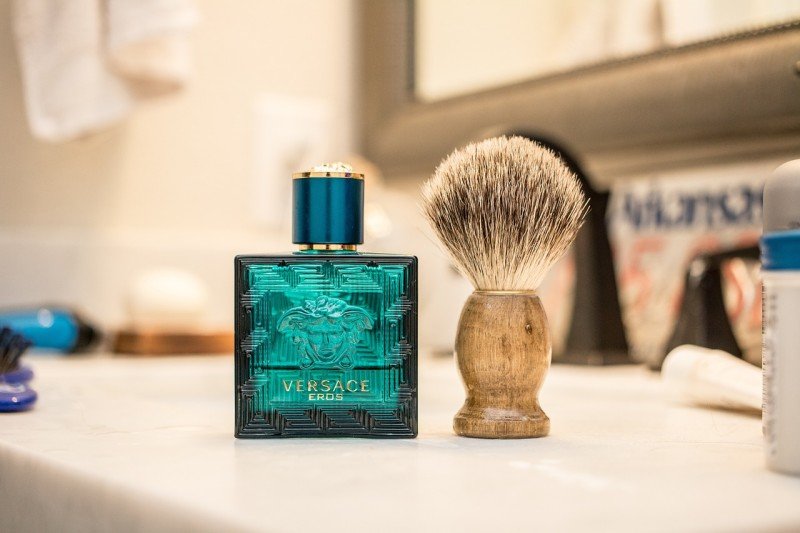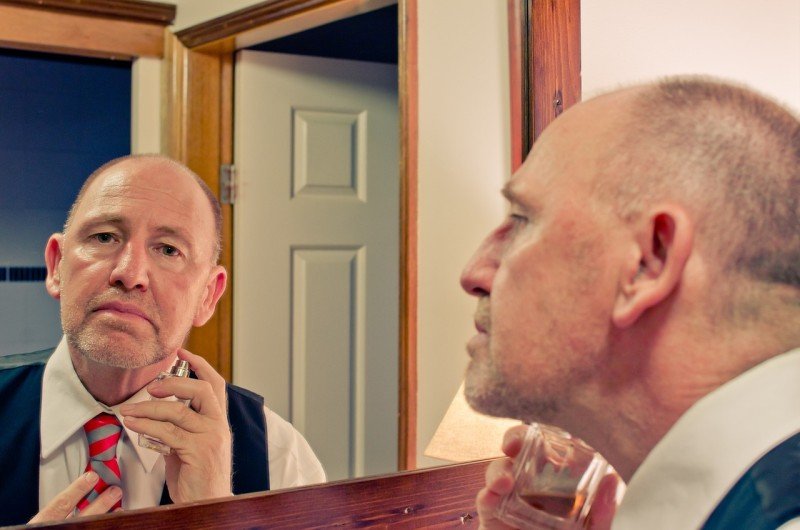Nicks, cuts, and razor burns - a story we know too well, right? But that doesn't have to be your tale. In this guide, we will introduce you to some practical techniques that can aid you in achieving a smooth shave.
From prepping your skin right to understanding why a sharp razor matters, we aim to help you master the nuanced craft of shaving. Forget about the painful aftermath of shaving, and instead, welcome a new era of a fresher, smoother face.
So, are you ready to revamp your grooming routine? Let's begin.
Key Takeaways
- Exfoliation and hydration are essential for skin preparation and smooth shaving.
- Choosing the right shaving cream type and adequately applying it is important for a close shave.
- Using a sharp razor and regularly replacing blades is crucial for a comfortable and effective shave.
- Shaving toward hair growth helps prevent skin irritation and ingrown hairs.
Preparing Your Skin for Shaving
The first step to a smooth shave is preparing your skin, and it's more important than you might think. One essential part of this process is exfoliation. You may wonder, why bother? Well, the benefits of exfoliation are numerous. It sloughs off dead skin cells, unclogs pores, and lifts hair follicles, making for a closer, smoother shave. Additionally, it can prevent nasty razor bumps and ingrown hairs. So, don't skip this step; your skin will thank you.
Next, you need to hydrate your skin properly. Hydrating skincare isn't just for women—it's crucial for anyone who wants to maintain healthy, smooth skin. Hydrated skin is more pliable and less prone to nicks and cuts during shaving. Apply a quality moisturizer nightly and use a hydrating shaving cream or gel. Remember, hydration starts from within, so drink plenty of water too.
The Art of Applying Shaving Cream
Once you've prepped your skin correctly, it's time to master applying shaving cream, which can make all the difference in your shaving experience. This isn't as simple as it seems; it's an art form that requires knowledge and practice. Here are three crucial steps that'll help you excel in this art:
-
Choosing the Right Cream Type: Cream types range from foams to gels to soaps. Foams are easy to apply but can dry out your skin. Gels offer a smooth glide but may not provide enough cushion. Soaps are traditional and offer the best of both worlds, but they require a shaving brush for application. Try different types and see what works best for your skin.
-
Proper Lathering: Lathering techniques vary based on the cream type. Foams and gels can be applied directly to the skin, while soaps must be lathered in a bowl first. Regardless, ensure the cream is evenly spread across your shaving area.
-
Applying the Cream: Use your fingers or a shaving brush to apply the cream in a circular motion. This helps lift the hair and allows the razor to glide smoothly.
Importance of Using a Sharp Razor
In addition to mastering the art of applying shaving cream, keeping a sharp razor in your routine is crucial for achieving a smoother, more comfortable shave. Here's where the importance of razor maintenance comes in.
A dull blade results in a rough shave and increases the risk of nicks, cuts, and irritation. Replacing your blade regularly is essential, ensuring it's always sharp and clean.
Blade selection is another crucial aspect. Not all blades are created equal. Some might be too sharp for your skin, leading to irritation, while others might be too dull, leaving you with an uneven shave. It's crucial to find the ideal balance. Experiment with different blades until you find one that gives you a close, comfortable shave without causing discomfort or irritation.
Razor maintenance and blade selection aren't just about getting a smoother shave. They're about taking care of your skin. A sharp, clean blade reduces the chances of acne and razor bumps, giving you healthier, more radiant skin.
Shaving in the Direction of Hair Growth
It would be best to always shave toward your hair growth for a smoother shave. This technique, often called 'shaving with the grain', helps prevent skin irritation, razor burn, and ingrown hairs.
However, it's not as simple as it sounds; first, you'll need to understand your hair growth patterns and grain identification.
-
Grain Identification: Run your hand across your stubble. The direction that feels smooth is the direction of the grain. This is how your hair naturally grows.
-
Understanding Hair Growth Patterns: Your hair doesn't all grow in the same direction. You'll likely find upward, downward, and sideways growth. So, take a few moments to study your face before you start shaving.
-
Implementing the Technique: Now that you know your hair's growth direction, it's time to shave. Always move your razor in the same direction as your hair growth.
Shaving in the direction of hair growth might take some getting used to, but once you've mastered it, you'll be rewarded with a smoother, more comfortable shave. It's an essential practice for achieving that perfect, irritation-free finish.
Rinsing and Post-Shave Care
After mastering the shaving technique with the grain, your next crucial step involves properly rinsing off and caring for your skin post-shave. It's not enough to splash water on your face and call it a day. You must thoroughly wash your face with warm water to remove leftover shaving cream or hair. Then, gently pat your skin dry; don't rub, as this can irritate.
It's time to focus on aftercare, which is pivotal for maintaining healthy skin. Aftercare products are designed to restore and protect your skin. First, apply an aftershave balm or lotion. Look for products that contain natural healing remedies, such as aloe vera or tea tree oil to soothe any cuts or irritation.
Next, apply a moisturizer to hydrate and rejuvenate your skin. If you have oily or acne-prone skin, opt for oil-free moisturizers. Your skin can be susceptible after a shave, so choose products free from harsh chemicals or strong fragrances.
Frequently Asked Questions
What Are Some Effective Homemade Remedies to Manage Razor Burns?
Are you grappling with the discomfort of razor burns? Using natural exfoliators can be an effective method to slough off dead skin cells. But what stands out as a particularly effective DIY treatment is aloe vera. This plant is renowned for its calming and regenerative properties, making it an excellent choice for managing skin irritation at home.
Are there Any Specific Foods or Supplements That Can Improve My Skin Condition for a Smoother Shave?
What you consume can significantly influence the state of your skin. Adopting a diet filled with antioxidant-rich foods, ones high in omega-3 fatty acids, and those fortified with essential vitamins can boost the hydration levels in your skin. Coupled with regular water intake, this can help maintain sufficiently moisturised skin, ensuring a more comfortable and smoother shaving experience.
What Are the Advantages and Disadvantages of Using Electric Shavers Versus Traditional Razors?
You're not alone if you find yourself in the aisle of personal care products, utterly confused about whether to opt for an electric shaver or a traditional razor. The choice isn't black and white, as both have unique strengths and weaknesses.
Electric shavers are notably handy and reduce the frequency of shaves. However, they might not provide as close a shave as you might like. On the other hand, traditional razors can give you a smooth, close shave, but they come with their own set of challenges. They necessitate a bit more post-shave attention to stave off any irritation.
Therefore, it's not about which is superior but what suits your preferences and lifestyle. Do you prioritize convenience or finish? Consider these factors before making your purchase.
How Often Should I Replace My Razor or the Blades in My Razor?
The frequency of replacing your razor or its blades mainly depends on the specific kind and the composition of the blades. Generally speaking, the need for a replacement arises after approximately 5-7 uses. This practice helps maintain the effectiveness of the razor and reduces the risk of irritating your skin.


